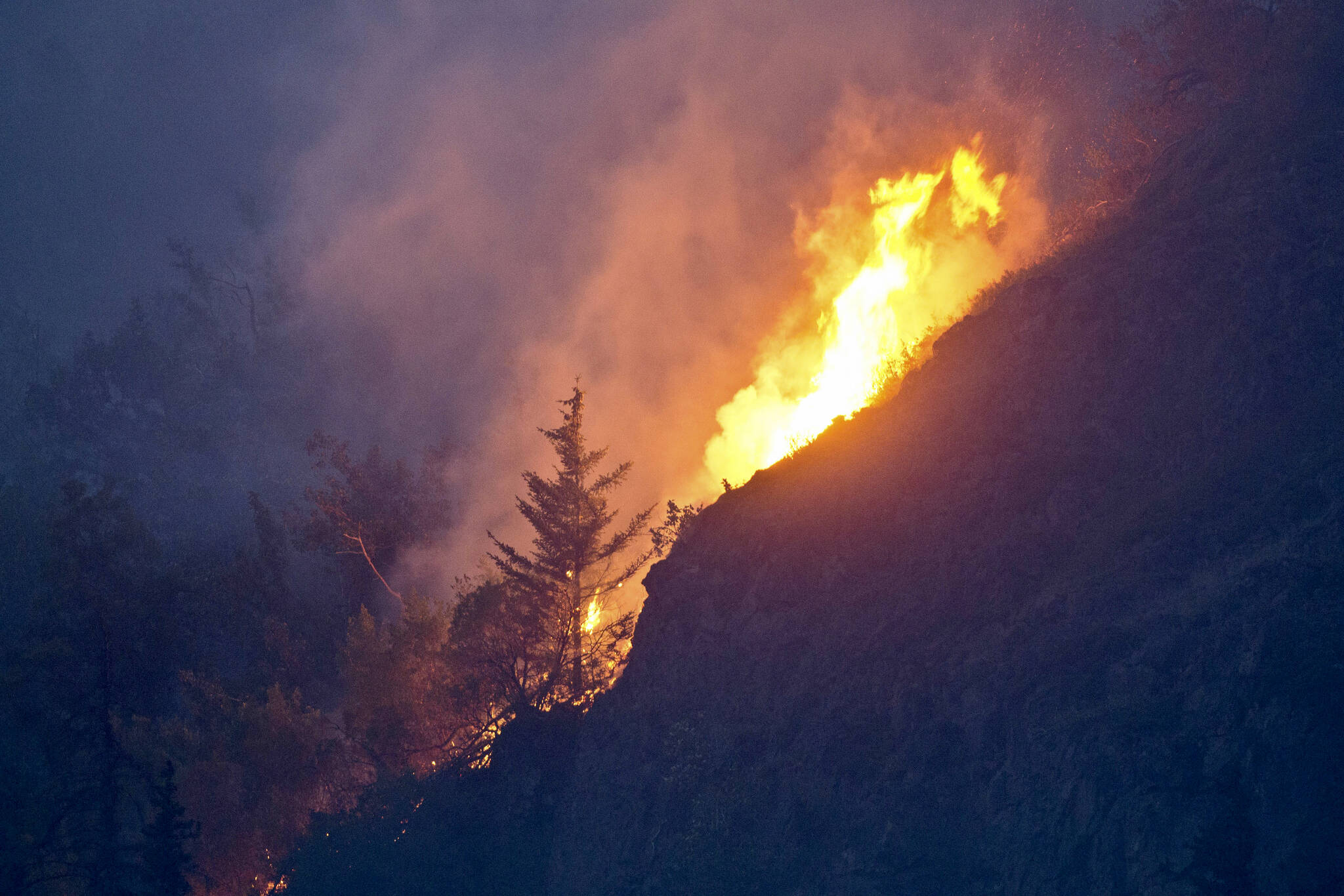ANCHORAGE — Research on a flat spot for air evacuations. Talk of old-style civil defense sirens to warn of fast-moving wildfires. Hundreds of urban firefighters training in wildland firefighting techniques while snow still blankets the ground.
This is the new reality in Alaska’s largest city, where a recent series of wildfires near Anchorage and the hottest day on record have sparked fears that a warming climate could soon mean serious, untenable blazes in urban areas — just like in the rest of the drought-plagued American West.
The risk is particularly high in the city’s burgeoning Anchorage Hillside neighborhood, where multi-million dollar homes have pushed further and further up steep slopes and to the forest’s edge. Making the challenge even greater is that many of these areas on the Hillside — home to about 35,000 people — have but one road in and out, meaning that fleeing residents could clog a roadway or be cut off from reaching Anchorage at all.
The prospect of a major wildfire there keeps Anchorage Fire Chief Doug Schrage awake at night when conditions are hot and dry.
“I’ve characterized this as probably the single largest threat to the municipality of Anchorage,” he said.
Schrage’s city fire department is adept at fighting blazes in buildings. But as Anchorage has grown, the available land is higher up, where wild and urban areas intersect, and those fires are very different from what his firefighters are trained to combat.
The city also has limited wildfire equipment, and it’s nearly impossible to get a fire engine up some switchback roads to homes nestled high up mountains.
“Our strategy is basically to put as many resources as we have on duty on a small fire so that we can keep it contained” while waiting for assistance from the Alaska Division of Forestry and Fire Protection, Schrage said.
This spring, 360 city firefighters are training on wildland firefighting tactics like using water hoses to create a line around the perimeter of a fire and the city is encouraging homeowners to participate in a program to identify hazards like brush and old trees that would feed a fire before it’s too late. In one hilly neighborhood, a community council is researching locations for a makeshift helipad that could be used for air evacuations.
That same small neighborhood with but one road in and out has also discussed installing sirens to warn residents on the city’s wooded fringes of fire danger and hopes to build a database of all residents for emergency communications.
“As much as you wouldn’t want to do it … it’s like rolling the dice on being alive or dead,” said Matt Moore, who fled his home in 2019 lest he be trapped on the wrong side of the flames on the single road.
Such precautions — common in parched and fire-prone states like California and Colorado — are relatively new in Anchorage in the face of increased fire risk fueled by global warming. The city reached 90 degrees Fahrenheit four years ago, the city’s hottest temperature on record, and it’s had five significant wildfires over the past seven years that were all extinguished before causing much damage.
Still, the U.S. is headed into an El Nino year this season, which traditionally means a bigger fire year and further raises concerns, said Brian Brettschneider, a climate scientist with National Weather Service, Alaska Region.
More than 4,844 square miles burned statewide last year — an area just under the size of Connecticut.
Since 1950, there have been 14 years in which more than 4,687 square miles — the equivalent of 3 million acres (1.2 million hectares) — have burned during Alaska’s short but intense fire season. Half of those fire seasons have occurred since 2002, including the worst year on record — 2004 — when over 10,156 square miles (26,304 square kilometers) burned.
From his home high above Anchorage in 2019, Moore saw the black smoke billowing from a fire miles away in a heavily wooded area of the city. He gathered his pets and important papers in his vehicle — his wife was already safe in Anchorage — and drove 5 miles down the only road serving the roughly 600 neighborhood residents to safety.
“Thankfully, they started getting it under control,” he said.
For now, both the city and Schrage’s fire department are focused on keeping things under control — implementing as many preventative measures as possible.
The city department has removed evergreen trees and reduced brush in strips of 100 feet (30 meters) next to neighborhoods to help contain any future fires and Anchorage has cleared trees and other hazards in parks and along greenbelts.
Firefighters have also conducted inspections at people’s homes to identify fire hazards such as firewood kept too close to their homes or too much vegetation on their property — all in hopes of preserving homes, livelihoods and the community in a time of growing climate uncertainty.

